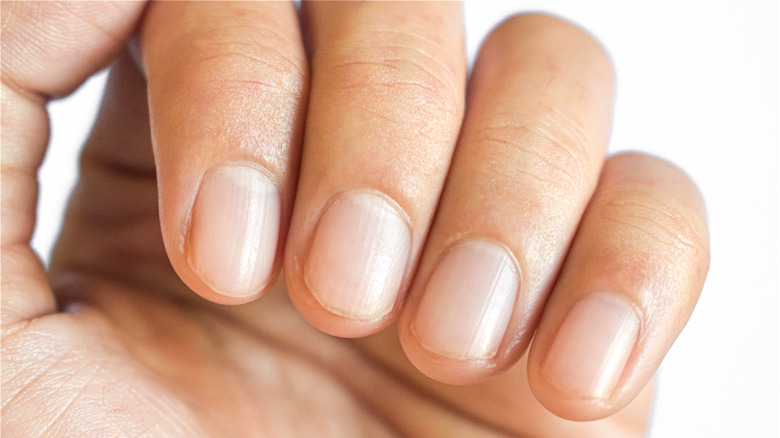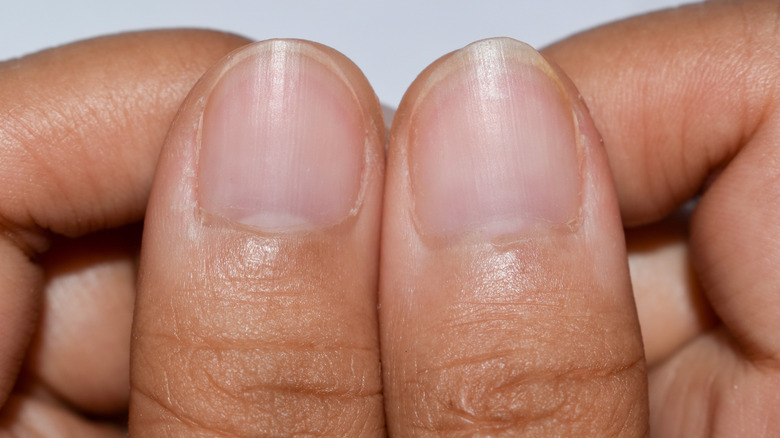No Half Moons On Your Nails? Here's What That May Mean
Keeping your nails looking their best is one of those understated secrets to polishing up your look. Whether it's a simple and casual manicure or a bold and colorful manicure. On that note, have you ever been curious about the little half-moon at the end of the nail that some people have? Well, they are a common part of the nail. However, it's perfectly normal if you don't have them either.
Although they resemble a half-moon and are popularly referred to as such, according to Healthline, they are actually called lunulae, with the singular term being lunula. They are commonly called fingernail moons. The term lunula, in fact, means little moon in Latin, making it the perfect name to call them. Regardless of how you refer to them, they are a natural part of the nail matrix, the tissue found right under your nail. The lunula is part of what produces cells that form the nail plate, the visible part of the nail. Fingernail moons aren't always so pronounced. However, that may indicate the skin at the base of the nail grew over and covered the lunula, dermatologist Dr. Dana Stern tells Well+Good. Fortunately, this is perfectly standard and quite common. A lunula that is not visible due to the skin hiding it is no cause for concern nor a sign of health issues.
Unhealthy lunulae
Although not having a lunula is not a cause for concern, according to Healthline, there are some signs you may want to look for in case your lunula is missing. It is recommended that if, along with the lunulae that are absent, you constantly feel light-headed and dizzy, experience cravings that aren't typical of you or have been observing a drastic change in your weight, it might be wise to see a physician. After all, it's possible that due to these symptoms, a person may be anemic, lack proper nutrition, or is depressed.
There are also more unusual symptoms, such as discoloration of the lunula. The color of your lunula, in these cases, can signify different issues. For example, ingesting too much fluoride can cause the lunula to take on a brownish hue. Silver poisoning may cause it to turn blue, while a pale blue lunula can be linked with diabetes. Another cause behind a blue lunula can be Wilson's disease. So, if you notice your lunulae taking on different hues, meet with the doctor promptly.
Disappearing lunulae
If you've previously noticed your lunula and it has since disappeared, there may be a few reasons behind it. For example, the experts at Medical News Today explain that a lack of the B-12 vitamin can cause your lunulae to disappear. If you notice such a change, it may be best to speak with a medical professional that can direct you to get the right tests to confirm any deficiencies.
Another cause for lunulae vanishing may be due to vitiligo, which is a condition that causes the skin to lose its color. A disappearing lunula isn't always consistent in vitiligo patients, but it sometimes can be a cause, so keep your eye out. After all, our bodies can always tell us when certain things must be taken care of, and if we pay close attention and listen, we may save ourselves a whole lot of trouble ahead of time.


